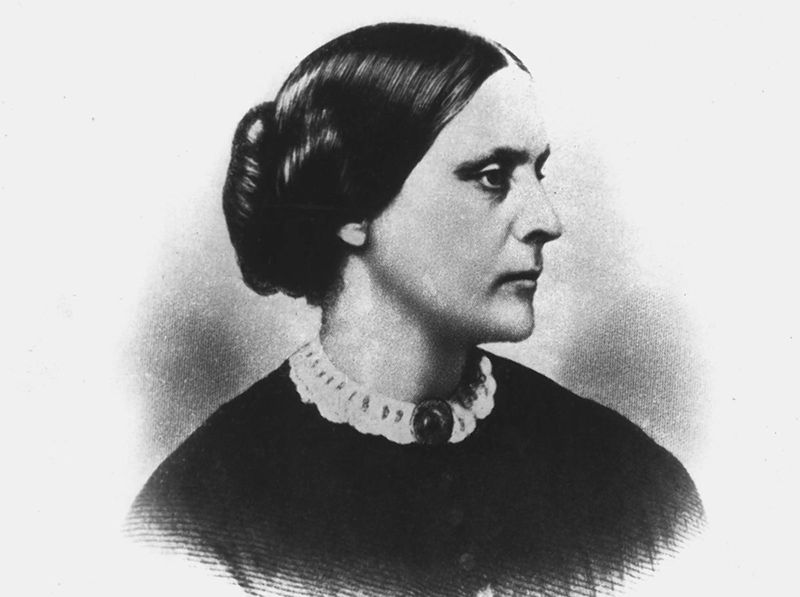When the 15th Amendment was ratified in 1870, granting African-American men the right to vote but still withholding that privilege from women of any race, feminist leader Susan B. Anthony was, to put it mildly, not pleased. To show just how displeased she was, she showed up at the polls for the 1872 presidential election and cast a ballot. For her efforts, she was immediately arrested and shortly thereafter convicted. Apparently, the judge’s directed guilty verdict had been written before the trial began. Anthony was fined, a penalty she refused to pay, and the case went no further.
Shop WomensVote100.shop – the official gift shop of the Women’s Suffrage Centennial Commision
That kind of public protest, along with her widely-publicized writings and statements, are what led Anthony, born Susan Brownell Anthony in Massachusetts in 1820, to the forefront of leadership in the women’s suffrage movement. She built a national reputation as president of the National Woman Suffrage Association, author of the first four volumes of the six-volume History of Woman Suffrage, and extensive press coverage. About three-quarters of a century after her death, she became the first woman ever depicted on American currency with the 1979 issue of the Susan B. Anthony dollar coin.
As with many visionary leaders, though, she was just a little ahead of her time and did not live to see her fondest mission succeed. In 1878, she was instrumental in presenting an amendment to Congress that would have given women the right to vote. It became popularly known as the Susan B. Anthony Amendment and was debated for years. Eventually, it became the 19th Amendment and was ratified in 1920, some 14 years after Anthony’s death.

Her rise to prominence was a bumpy one at first. When she first began campaigning for women to have the right to vote and for women’s rights in general, she was the target of ridicule and sarcasm from many who viewed her activities as harmful to traditional notions of marriage and female roles. Over time, though, she became widely revered and was invited to the White House by President William McKinley to celebrate her 80th birthday. Along the way, she made very popular appearances at national events including the World’s Columbian Exposition in Chicago in 1893 and the Lewis and Clark Exposition in Portland, Oregon in 1905, as well as leading the American delegation to the International Council of Women in Berlin in 1904.
She didn’t worry much about what people thought of her, once saying, “Cautious, careful people, always casting about to preserve their reputation and social standing, never can bring about reform. Those who are really in earnest must be willing to be anything or nothing in the world’s estimation, and publicly and privately, in season and out, avow their sympathy with despised and persecuted ideas and their advocates, and bear the consequences.
Shop Susan B. swag at WomensVote100.shop – the official gift shop of the Women’s Suffrage Centennial Commision
Today, in addition to being on the dollar coin, she’s been honored in a variety of ways. The NYC chapter of the National Organization of Women presents the Susan B. Anthony Award annually to honor “grassroots activists dedicated to improving the lives of women and girls in New York City.” She was inducted into the National Women’s Hall of Fame in 1973, and the Susan B. Anthony Birthplace Museum was opened in Adams, Massachusetts in 2010 on the 190th anniversary of her birth.
(Note: Revised June 16, 2020. This post previously displayed an image once thought to be of Susan B. Anthony cir. 1850. Thanks to a reader, we were informed it has since been found to be incorrect. We replaced it with the one above.)

